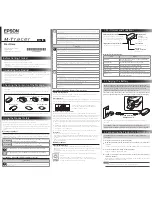
TESTING OTHER SEMICONDUCTOR DEVICES
Diacs
A diac is a two-terminal, three-layer semiconduc
tor that exhibits the breakdown characteristic of two
zener diodes placed back-to-back (birectional break
down). It is non-conductive until the applied voltage
exceeds its breakdown value, then current ava
lanches and the voltage drops across the terminals
drops to near zero. Once conduction has started, it
continues until the current drops below a holding
current value necessary to sustain operation. Leak
age current. breakdown voltage, and holding current
can be measured with the curve tracer (the display
will be similar to that of an SCR). Since it is bi
directional. it should be tested in both polarities.
Integrated Circuits
Integrated circuits (IC's) are often multiple tran
sistors or semiconductor devices packaged together.
The curve tracer may be used to test such !C's. Jf
the semiconducto!' devices can be identified and iso
lated to specific terminals of the IC, they can be indi
vidually tested with the curve tracer. Be aware that
other circuit elements may be present in the IC
which may cause variation in the expected display,
such as loops in the curves.
MAINTENANCE and CALIBRATION
The 501A is precisely calibrated at the factory for
optimum performance and should never require re
adjustment except in rare cases of failure and repair.
If recalibration is necessary, however, it can be ac
complished by using a digital voltmeter and a few
jumper wires. To achieve the rated specification
accuracy, it is necessary that the digital meter be a
3½ digit unit, and possess a 0.1 % accuracy. An
alternate but less accurctte method (using an oscillo
scope) is given if a digital meter is not available.
CALIBRATION PROCEDURE
1. Stand the unit on its left end panel and remove
3 screws retaining the bottom plate. Pry loose
the bottom plate and remove.
2. Remove 4 screws retaining the
right
end panel
to the main assembly; two oi these are on the
exterior surface and the other two hold the PC
board to this panel. Pull off the end panel.
3. Using jumpers or temporarily soldered wires.
short TP30, TP31 and TP32 to the +S Volt line on
the PC board.
4. Attach a digital voltmeter to TP29 and turn on
AC power to the unit.
5. Adjust the CALIBRATE pot R36 for a reading of
-3.50 Volts on the digital meter.
6. Remove the wires as indicated in step #3.
7. Attach the digital voltmeter to TP24A temporar
ily short TP29 to ground, and adjust the ZERO
pot. R37, for a zero reading on the voltmeter.
Remove the temporary short. The unit is now
calibrated.
Figure 38. Location of Internal Adjustments
30
Alternate Method using an Oscilloscope
(less accuracy):
I. Attach the
direct
input probe of a well-calibrated
DC coupled oscilloscope to TP29. Ground the
scope to the 501A ground.
2. Turn on AC power to the curve tracer and syn
chronize the oscilloscope to view the negative
going staircase present at TP29.
3. Once synchronized, adjust CALIBRATE trimmer
R36, to obtain 0.5 Volt between each step of the
staircase.
4. Turn the unit off and attach a lOK resistor be
tween the B-E terminals of one side of the unit
(SOCKET switch towards that side); temporarily
short TP29 to ground.
5. Attach a DC voltmeter across the lOK resistor
and set it for the most sensitve DC range.
Note: Ensure that the meter is properly zeroed
before attaching it.
6. Rotate the 501A STEP SELECTOR to the 2mA
position and set POLARITY to NPN.
7. Turn the AC power on and adjust the ZERO trim
mer on the 501A PC board until the DC voltmeter
reads "O". Remove temporary short from TP29.
Note: The trimmer has a negative and positive
range; preset it to center before adjustment.
CURVE DISPLAY MODIFICATION
The Model 501A is factory adjusted to display 6
curves - 5 active and a zero reference baseline,
sometimes referred to as step "0". Thru simple manip
ulation of the reset diodes, it is possible to display
any number of curves from 2 through 8. Figure 39
shows the locations of these diodes on the PC board.
Note the two extra "dotted" diodes (marked Dl lA
and Dl2A) on the top side nomenclature. These are
extra positions left open for such modification. The
chart below indicates the placement of diodes that
will produce a given number of curves.
Number of Display Curves: Position of Diode(s):
2
Dl l
3
Dll and Dl lA
4
D12
5
Dl lA and Dl2
6
Dl l and Dl2
7
Dl l, Dl lA, and Dl2
8
Short TP43 to GROUND





































